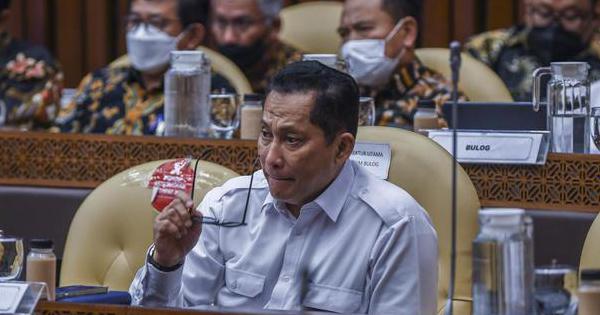Perum Bulog denies that the company’s import of frozen buffalo meat from India is the source mouth and nail disease (PMK) epidemic in the country. This rebuttal is evidenced by conducting random inspections of frozen meat suppliers in India.
The Business Director of Perum Bulog, Febby Novita, said that he had personally inspected the process of slaughtering and transporting livestock in Bollywood. Febby conducts inspections from the farmer stage to the production house in randomly selected areas to check the no special preparation procedures of frozen meat suppliers.
“I brought a documentation team (myself) and there were no arrangements. So, we were completely random in doing it,” said Febby in a hearing with Commission IV DPR, Monday (27/6).
Febby explained, there are four stages that a livestock goes through before it is exported in the form of frozen meat to Indonesia. These stages are breeders, aggregators, suppliers, and production houses.
The number of veterinarians in each stage increases so that it can reach tens in the production house. Before being slaughtered, the buffalo will go through a withering process so that the cattle are free from the virus.
Withering is done by storing livestock in a room with a temperature of minus 40 degrees, then moving them to a room with a temperature of minus 28 degrees. The withering makes the pH level of the meat at the level of 5.4 or the level of death of the virus.
“From the start, the slaughtering process has been strict, ensuring that the animal is healthy, there is no FMD, anthrax, and other viruses. If we only provide certification and others, maybe we can’t be sure (like this),” said Febby.
The President Director of Bulog, Budi Waseso, questioned the source of information that the FMD outbreak in the country came from imported meat from India. According to him, this information should immediately get sufficient clarification.
“We are in constant communication with India. Don’t let it be image which is awakened by a negative society (against India’s imported frozen meat),” said Budi Waseso.
Director General of Livestock and Animal Health at the Ministry of Agriculture (Kementan), Nasrullah, said the government had never issued a statement regarding the source of the PMK case in recent times. Currently, the Inspectorate General of the Ministry of Agriculture is still investigating the source of the FMD outbreak that is currently spreading.
Nasrullah noted that PMK was first reported in Aceh on April 22, 2022. Meanwhile, the second case was found in East Java on April 28, 2022.
The chairman of Commission IV DPR, Sub-Department, said there are three ports that the government must pay attention to regarding the PMK outbreak. The ports in question are Tanjung Priok, Tanjung Perak, and Belawan.
Previously, the Indonesian Farmers Union (SPI) suspected that the mouth and foot disease (PMK) which is now endemic in the country came from imported meat. The surge in meat imports that has occurred since 2021 is considered to be driven by Law (UU) No. 41-2014 concerning Livestock and Animal Health.
General Chairman of SPI, Hendy Saragih, said that Law no. 41-2014 expands the import policy when the level of dependence on imported beef is already high. According to him, the regulation is detrimental to the public’s right to live a healthy, prosperous, safe and comfortable life from the dangers of infectious diseases from animals or imported animal products.
“The government should protect livestock in Indonesia in line with the Jokowi government’s promise to build food sovereignty in Indonesia, which targets Indonesia to become a country that is self-sufficient in meat,” Henry said in an official statement, Thursday (12/5).
The Central Statistics Agency (BPS) recorded that the volume of beef imports last year rose 22.4 percent from 223,420 tons in 2020 to 273,530 tons. Meanwhile, the import value rose 35.83% to US$ 948.37 million or Rp 13.64 trillion.
According to data from the Mouth and Nail Disease Task Force (PMK Task Force), the FMD outbreak has infected 214,994 livestock as of Tuesday, June 21, 2022, at 12.30 WIB. This infection case spread in 208 districts/cities in 19 provinces of Indonesia.
–
Reporter: Andi M. Arief

![Buying an apartment: lean years are coming for the real estate market. What this means for those who plan to buy a house or apartment [27.06.2022] Buying an apartment: lean years are coming for the real estate market. What this means for those who plan to buy a house or apartment [27.06.2022]](https://d-art.ppstatic.pl/kadry/k/r/1/63/8f/62b59b9867c16_o_original.jpg)
